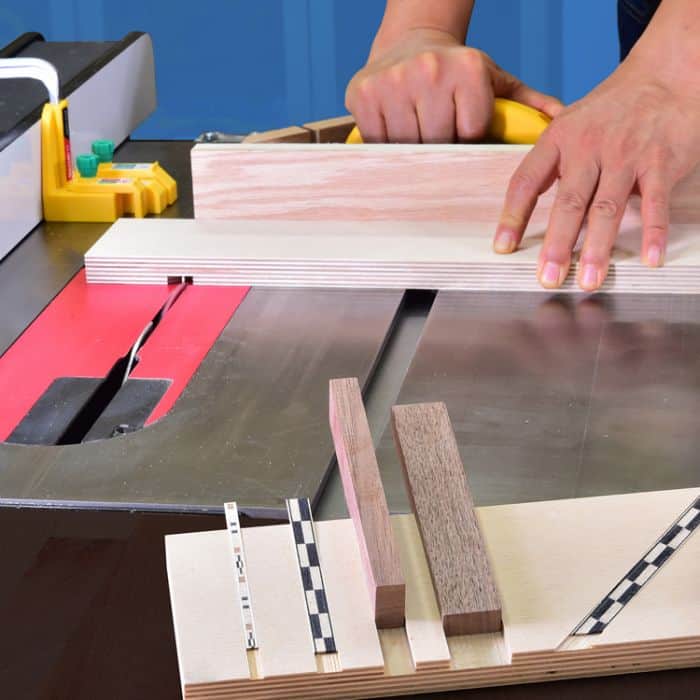
In woodworking, you make various angle cuts, and a table saw is an excellent way to achieve them with precision and accuracy. While some are straightforward, others are quite challenging and will need you to make adequate preparation and commit to fully understanding the process to not miss on some points.
This post explains how to come up with a 60-degree angle from a table saw. The tricky part here is that table saws measure from 0-45 degrees, and for you to cut a greater angle than that, you will need to make adjustments. You either have to use a jig, or a hybrid table saw.
Any angle other than 90 degrees is known as a bevel cut. Bevel cuts come in handy where decoration matters. For instance, when you want to make a photo frame, fit moldings, and cabinet trims, bevel cuts are inevitable.
Carefully follow the below step-by-step guide about how to cut 60 degrees angles on your table saw.
Step1: Pick out the Right Angle
Single out the actual degree by subtracting 45 from your intended angle. In this case, you will subtract 45 degrees from 60 degrees and set it at 150.
Step 2: Fine-tune to the Correct Angle
Using the adjustment knob on the front of your table saw, tune to 150 angles. Double-check to ensure you set it accurately right from the start.
Step 3: Place your Material
Put your piece of wood on the table surface in a vertical manner opposite to the blade. Get a used or scrap piece of material and place it adjacent to the workpiece to help keep it in position while performing the cut.
Step 4: Adjust the blade
Reposition the blade to a higher height.
Step 5: Cut
Turn on the table saw and push your workpiece to initiate the bevel cut. Be careful not to use much pressure to avoid uneven cuts. Hold the piece tightly or use clamps for better outcomes.
In case of uneven 600 angel cuts:

At times you will find out that achieving even cuts was not possible despite keenly following the instructions. That should not trouble you since you can iron out the issues. That may occur due to the saw’s inability to reach some parts leading to irregularities. Use a trimming saw to even the angles.
Remember to always brace yourself with safety gears like gloves for your hands, goggles for the eyes, and earplugs for your ears anytime using the table saw.
Ensure that the wood has no attachments on it.
You will have to handle many types of angle cuts in your woodworking journey, both complex and straightforward. Mastering this art will equip you enough and place you in a better position to tackle any angled cuts easily. Our guide here is a valuable resource to help you with all the critical information to cut 60 degrees angles accurately and efficiently. Alternatively, you could seek professional intervention to have your bevels done.
Related Articles:
Best thin kerf table saw blade
Best combination table saw blade
Can a track saw replace a table saw
Best crosscut sled for the table saw
Last Updated on January 30, 2022 by John G. Anderson
Contents
